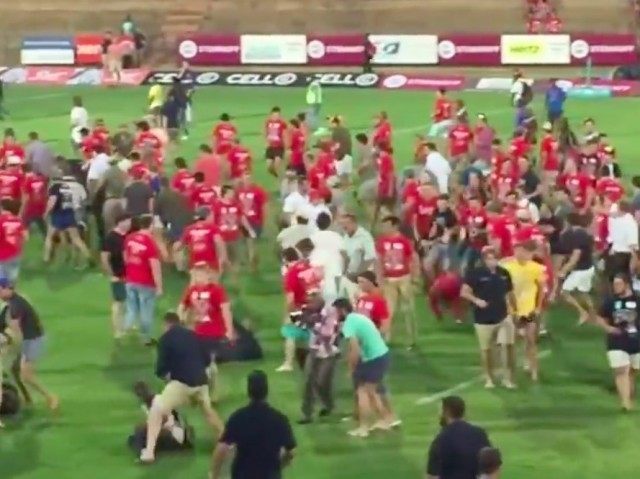South Africa has seen continued mob violence over the past week. On Monday, a mob of white students rushed the field and beat and chased black demonstrators who had interrupted a rugby game at the University of the Free State in Bloemfontein. Then, on Wednesday, students from the revolutionary socialist Economic Freedom Fighters party torched buildings, including a science center, at the Mafikeng campus of North West University, forcing its closure.
The videos of the clashes on the rugby field are particularly disturbing, and show the worst of both sides on a re-emerging racial divide in South Africa: a sense of entitlement by the protesters, who are used to seeing institutions capitulate; and a sense of vitriolic hatred by the mob, whose members kick and stomp demonstrators mercilessly.
No doubt some of the tensions are fueled by South Africa’s economic frustrations. The currency has lost more than half of its value over the past five years, and the economic growth rate hovers around 1%. Though a rising tide lifts all boats, an ebbing tide means everyone has to worry about being stranded on the sand, and hurts social cohesion.
Yet the real causes of the unrest are the racial and class tensions stoked by the ruling party, the African National Congress (ANC), and its alliance partners, the Communist Party and the trade unions. They have used race and class to demonize opposition, even during the late Nelson Mandela’s administration. Partly as a result, the country’s new opposition forces are emerging on the left, going further than the ANC and rejecting parliamentary methods.
It is not clear how South Africa will rescue itself this time. The only solutions–free market reforms–are demonized except by the country’s largest opposition party, the Democratic Alliance–which is marginalized, falsely, as “racist.”

COMMENTS
Please let us know if you're having issues with commenting.